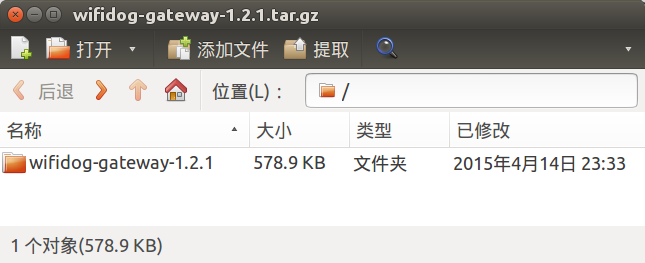awk
[root@koukou tan_shell]# df -Th #文件系统 类型 容量 已用 可用 已用%% 挂载点 /dev/sda3 ext4 321G 223G 83G 73% / tmpfs tmpfs 1.9G 608K 1.9G 1% /dev/shm /dev/sda1 ext4 92G 261M 87G 1% /boot [root@koukou...
awk
[root@koukou tan_shell]# df -Th
#文件系统 类型 容量 已用 可用 已用%% 挂载点
/dev/sda3 ext4 321G 223G 83G 73% /
tmpfs tmpfs 1.9G 608K 1.9G 1% /dev/shm
/dev/sda1 ext4 92G 261M 87G 1% /boot
[root@koukou tan_shell]# df -Th | grep "/$"
/dev/sda3 ext4 321G 223G 83G 73% /
[root@koukou tan_shell]# df -Th | grep "/$"|awk '{print $5}'
83G
[root@koukou tan_shell]# df -Th | grep "/$"|awk '{print $6}'
73%
[root@koukou tan_shell]# df -Th | grep "/$"|awk '{print $6}'|tr -d "%"
73
[root@koukou tan_shell]#
[root@koukou mysql]# df -t ext4
#文件系统 1K-块 已用 可用 已用% 挂载点
/dev/sda3 336503968 243882004 75528488 77% /
/dev/sda1 96143116 266440 90992812 1% /boot
[root@koukou mysql]# df -t ext4|awk 'NR==1' #输出第一行
#文件系统 1K-块 已用 可用 已用% 挂载点
[root@koukou mysql]# df -t ext4|awk 'END{print $0}' #输出最后一行
/dev/sda1 96143116 266440 90992812 1% /boot
[root@koukou mysql]#
几种截取某个字符的方法:
[root@koukou tan_shell]# echo "abc" |rev|cut -c1
c
[root@koukou tan_shell]# a="abc"
[root@koukou tan_shell]# echo ${a: -1}
c
[root@koukou tan_shell]# echo "abc" |awk -F "" '{print $1}'
a
[root@koukou tan_shell]# echo "abc" |awk -F "" '{print $NF}' #若要以空格为分割副则这里双引号内必须有空格
c
[root@koukou tan_shell]#
几种截取百分比的方法:
[root@koukou tan_shell]# df -Th|grep "/$"|awk '{print $6}'
74%
[root@koukou tan_shell]# df -Th|grep "/$"|awk '{print $6}'|tr -d "%"
74
[root@koukou tan_shell]# df -Th|grep "/$"|awk '{print $6}'|sed 's/%//'
74
[root@koukou tan_shell]# df -Th|grep "/$"|awk '{print int($6)}'
74
[root@koukou tan_shell]# df -Th|grep "/$"|awk '{print int(3.1415)}'
3
[root@koukou tan_shell]#
[root@koukou tan_shell]# val=this
[root@koukou tan_shell]# echo "$val is %"
this is %
[root@koukou tan_shell]# echo "$valis %"
%
[root@koukou tan_shell]# echo "${val}is %"
thisis %
[root@koukou tan_shell]# echo "${val} 'is %"
this 'is %
[root@koukou tan_shell]#
awk命令内插入其他命令的使用方法:
[root@tan anli]# awk '{ system("ls -l") }' test1.sh #有多少行执行几次
[root@tan anli]# awk '{ system("useradd" $3) }' test1.sh #每一行的第三列作为用户名useradd添加用户
[root@tan anli]# cat file
yi1 yi2 yi3 yi4
er1 er2 er3 er4
san1 san2 san3 san4
[root@tan anli]# awk '{ system("pwd ")}' file
/tan_shell/anli
/tan_shell/anli
/tan_shell/anli
[root@tan anli]#
[root@tan anli]# awk '{ system("echo " $1)}' file
yi1
er1
san1
[root@tan anli]#
打印某一行:
[root@tan tan_shell]# awk "NR==1" /etc/passwd root:x:0:0:root:/root:/bin/bash [root@tan tan_shell]# awk "NR==2" /etc/passwd bin:x:1:1:bin:/bin:/sbin/nologin [root@tan tan_shell]#
打印最后一个字段
[root@koukou boot]# ls -l|awk '$5>=102{print $NF}' 输出大小大于等于102的文件名
#取最后一个字符
echo ${a: -1}
echo $a | rev | cut -c1
#查看文件的第几行:
sed -n '5p' file1
awk 'NR==5' file1
head -5 file1 | tail -1
打印file文件内空行所在的行号:
[root@localhost tan]# awk '{if($0~/^$/)print NR}' file
2
4
[root@localhost tan]# vim file
[root@localhost tan]# cat file
sadasdsadas
sadjh
asjdh
方法二:
[root@localhost tan]# grep -n ^$ file -n#是显示行号 2: 4: [root@localhost tan]# grep -n ^a file 5:asjdh [root@localhost tan]# cat file sadasdsadas sadjh asjdh [root@localhost tan]#
由上面可以看出,行号已经显示出来了,现在只需要提取出行号就ok了
[root@localhost tan]# grep -n ^$ file|awk -F ":" "{print $1}" //错误做法,不能用双引号
2:
4:
[root@localhost tan]# grep -n ^$ file|awk -F":" '{print $1}'
2
4
[root@localhost tan]#
[root@localhost tan]# grep -n ^$ file|awk 'BEGIN{FS=":"}{print $1}'
2
4
[root@localhost tan]#
[root@localhost tan]# grep -n ^$ file|awk -F: 'BEGIN{FS=":"}{print $1}'
2
4
[root@localhost tan]#
BEGIN{...}.....END{..........} #语句块
该语句执行不要求从文件读取数据
[root@koukou tan_shell]# route -n |grep "UG"|awk '{print $2}'
10.0.1.254
[root@koukou tan_shell]# awk -F: 'BEGIN{print "start"}' /etc/passwd
start
[root@koukou tan_shell]# awk -F: 'BEGIN{print "start"}' 输出开始字符串
start
[root@koukou tan_shell]# awk -F: 'BEGIN{print start}'
[root@koukou tan_shell]# awk -F: 'BEGIN{start=10;print start}' 不加双引号的话就认为是变量
10
[root@koukou tan_shell]#
[root@koukou tan_shell]# awk -F: 'BEGIN{print "hello!!!"}{print $1}' test.txt
hello!!!
abchsafkjhd
def
gjtshfajas
def
abc
abc
haha
[root@koukou tan_shell]# awk -F: 'BEGIN{print "hello!!!"}{print $1}'
hello!!!
test.txt
test.txt
afjk
afjk
safd fads
safd fads
^C
[root@koukou tan_shell]#
模式匹配,打印输出:
[root@koukou tan_shell]# awk -F: '/root/{print $1}' /etc/passwdroot
operator
[root@koukou tan_shell]# awk -F: '/^root/{print $1}' /etc/passwd
root
[root@koukou tan_shell]# awk -F: '/bash/{print $1}' /etc/passwd
root
mysql
lizhenhua
weichao
tan
tan1
tan2
tan3
js1
kf1
js2
kf2
JECK
tom
jerry
lee
[root@koukou tan_shell]# awk -F: '/bash$/{print $1}' /etc/passwd
root
mysql
lizhenhua
weichao
tan
tan1
tan2
tan3
js1
kf1
js2
kf2
JECK
tom
jerry
lee
[root@koukou tan_shell]#
[root@koukou tan_shell]# awk -F: '/root/' /etc/passwd #默认打印出整行
root:x:0:0:root:/root:/bin/bash
operator:x:11:0:operator:/root:/sbin/nologin
[root@koukou tan_shell]#
BEGIN里面的FS:相当于-F的功能
[root@koukou tan_shell]# awk 'BEGIN{FS=":"}NR<=5{print $1,NR}' /etc/passwd FS:#分割符,NR行号
root 1
bin 2
daemon 3
adm 4
lp 5
[root@koukou tan_shell]#
[root@koukou tan_shell]# awk 'BEGIN{FS=" "}NR<=5{print $1,NR}' /etc/passwd
root:x:0:0:root:/root:/bin/bash 1
bin:x:1:1:bin:/bin:/sbin/nologin 2
daemon:x:2:2:daemon:/sbin:/sbin/nologin 3
adm:x:3:4:adm:/var/adm:/sbin/nologin 4
lp:x:4:7:lp:/var/spool/lpd:/sbin/nologin 5
[root@koukou tan_shell]#
OFS: {print $1, NR}的分割符,默认为一个空格
[root@koukou tan_shell]# awk 'BEGIN{FS=":"; OFS="--------"}NR<=5{print $1, NR}' /etc/passwd
root--------1
bin--------2
daemon--------3
adm--------4
lp--------5
[root@koukou tan_shell]#
[root@koukou tan_shell]# awk 'BEGIN{FS=":"; OFS="tttt"}NR<=5{print $1, NR}' /etc/passwd
root 1
bin 2
daemon 3
adm 4
lp 5
[root@koukou tan_shell]#
[root@koukou tan_shell]# echo "abc hij:xyz 123 456:qq" |awk -F"[ t:]+" '{print $3}' 分割符为空格或者t
xyz
[root@koukou tan_shell]# echo "abc hij:xyz 123 456:qq" |awk -F"[ :]+" '{print $3}'
xyz
[root@koukou tan_shell]# awk 'BEGIN{a=10; b=12 ;print a+b}'
22
[root@koukou tan_shell]# echo "abc hij:xyz 123 456:qq" |awk -F: '{print $3}'
qq
计算总的行数:
[root@koukou tan_shell]# cat test.txt
abchsafkjhd tom
saf
asfs
cfh
kjj
[root@koukou tan_shell]# awk '{print NR}' test.txt
1
2
3
4
5
[root@koukou tan_shell]# awk 'END{print NR}' /etc/passwd
54
[root@koukou tan_shell]# awk 'END{print NR}' test.txt
5
[root@koukou tan_shell]# awk 'BEGIN{print NR}' test.txt
0
[root@koukou tan_shell]#
[root@koukou tan_shell]# awk 'BEGIN{i=0}{i++}END{print i}' test.txt
5
[root@koukou tan_shell]# awk 'BEGIN{i=0}{i++}{print i}' test.txt
1
2
3
4
5
[root@koukou tan_shell]#
[root@koukou tan_shell]# awk 'BEGIN{i=0}{i++;print i}' test.txt
1
2
3
4
5
[root@koukou tan_shell]#
[root@koukou tan_shell]# awk -F: '$3==509{print $1}' /etc/passwd
js1
[root@koukou tan_shell]#
[root@koukou tan_shell]# awk -F: '$3+$4>=5000{print $1}' /etc/passwd
nfsnobody
[root@koukou tan_shell]#
[root@koukou tan_shell]# awk -F: '$1=="root"{print $1}' /etc/passwd #匹配字符串
root
[root@koukou tan_shell]# awk -F: '$1=="root"{print $3}' /etc/passwd
0
[root@koukou tan_shell]# awk -F: '$1=="root"{print $4}' /etc/passwd
0
[root@koukou tan_shell]# awk -F: '$1=="root"{print $0}' /etc/passwd
root:x:0:0:root:/root:/bin/bash
[root@koukou tan_shell]#
-v选项 接受变量
[root@koukou tan_shell]# awk '$1~/root/{print $0}' /etc/passwd #~匹配,每一行是否包含有root,有则输出整行
root:x:0:0:root:/root:/bin/bash
operator:x:11:0:operator:/root:/sbin/nologin
[root@koukou tan_shell]# awk '$0~/root/{print $1}' /etc/passwd
root:x:0:0:root:/root:/bin/bash
operator:x:11:0:operator:/root:/sbin/nologin
[root@koukou tan_shell]# awk -F:'$0~/root/{print $1}' /etc/passwd
^C
[root@koukou tan_shell]# awk -F: '$0~/root/{print $1}' /etc/passwd
root
operator
[root@koukou tan_shell]#
[root@koukou tan_shell]# a=1
[root@koukou tan_shell]# b=2
[root@koukou tan_shell]# awk -v v1=$a -v v2=$b 'BEGIN{print v1/v2}'
0.5
[root@koukou tan_shell]# c=`awk -v v1=$a -v v2=$b 'BEGIN{print v1/v2}'`
[root@koukou tan_shell]# echo $c
0.5
[root@koukou tan_shell]#
中英文切换:
LANG=C C即ascii, 或LANG=也可, 自动使用英文
vim /etc/sysconfig/i18n
echo $LANG
LANG="en_US.UTF-8"
LANG="zh_CN.UTF-8"
[root@koukou 桌面]# echo $LANG
zh_CN.UTF-8
[root@koukou 桌面]#
[root@koukou 桌面]# LANG=
[root@koukou 桌面]# echo $LANG
[root@koukou 桌面]#
[root@koukou tan_shell]# c=`awk 'BEGIN{print a/b}'`
awk: 致命错误: 试图除0
[root@koukou tan_shell]# c=`awk 'BEGIN{a=1;b=2;print a/b}'`
[root@koukou tan_shell]# echo $c
0.5
[root@koukou tan_shell]# LANG= #这样设置一下,错误提示就变为英文的了
[root@koukou tan_shell]# c=`awk 'BEGIN{print a/b}'`
awk: fatal: division by zero attempted
[root@koukou tan_shell]#
[root@koukou tan_shell]# ifconfig -a | grep "^w" #字母数字下划线开头的
eth0 Link encap:Ethernet HWaddr 00:30:67:F2:0C:21
eth1 Link encap:Ethernet HWaddr EC:88:8F:EF:3D:03
lo Link encap:Local Loopback
vmnet1 Link encap:Ethernet HWaddr 00:50:56:C0:00:01
vmnet2 Link encap:Ethernet HWaddr 00:50:56:C0:00:02
vmnet3 Link encap:Ethernet HWaddr 00:50:56:C0:00:03
vmnet8 Link encap:Ethernet HWaddr 00:50:56:C0:00:08
[root@koukou tan_shell]#
模式匹配:
[root@koukou tan_shell]# awk -F: '/root/' /etc/passwd
root:x:0:0:root:/root:/bin/bash
operator:x:11:0:operator:/root:/sbin/nologin
[root@koukou tan_shell]# awk -F: '/root/{print $0}' /etc/passwd
root:x:0:0:root:/root:/bin/bash
operator:x:11:0:operator:/root:/sbin/nologin
[root@koukou tan_shell]# awk 'NR==4' /etc/passwd
adm:x:3:4:adm:/var/adm:/sbin/nologin
[root@koukou tan_shell]#
判断:
[root@koukou tan_shell]# awk -F: '{if($0 ~ /^root/)print $1}' /etc/passwd
root
[root@koukou tan_shell]# awk -F: '/root/{if($0 ~ /^root/)print $1}' /etc/passwd
root
[root@koukou tan_shell]# awk -F: 'NR<=10{if($3==501)print $3;else if($3==502)print NR;else print NF}' /etc/passwd
7
7
7
7
7
7
7
7
7
7
[root@koukou tan_shell]#
[root@koukou tan_shell]# awk -F: '{if($1 == "root" || $3 == 503)print "ok"}' /etc/passwd
ok
[root@koukou tan_shell]# awk -F: '{if($1 ~ /^root/ || $3 == 503)print "ok"}' /etc/passwd
ok
[root@koukou tan_shell]# awk -F: '{if(NR>3)next;print $1}END{}print NR}' /etc/passwd
awk: {if(NR>3)next;print $1}END{}print NR}
awk: ^ syntax error
[root@koukou tan_shell]# awk -F: '{if(NR>3)next;print $1}END{print NR}' /etc/passwd
root
bin
daemon
54
[root@koukou tan_shell]# awk -F: '{if(NR>3){next;}; print $1}END{print NR}' /etc/passwd #没包含在判断语句内还是不会读取下一行,可见next的作用是读取下一行,不执行print$
root
bin
daemon
54
[root@koukou tan_shell]#
[root@koukou tan_shell]# awk -F: '{if(NR>3){exit;}; print $1}END{print NR}' /etc/passwd exit#跳出循环,执行END后面的语句
root
bin
daemon
4
[root@koukou tan_shell]#
[root@koukou tan_shell]# awk 'BEGIN{for(i=1;i<=5;i++)print i}'
1
2
3
4
5
[root@koukou tan_shell]#
[root@koukou tan_shell]# df -Th |grep "/$"|awk
'{print int($6)}'
74
[root@koukou tan_shell]# df -Th |grep "/$"|awk '{print int(4.222}'
awk: {print int(4.222}
awk: ^ syntax error
[root@koukou tan_shell]# df -Th |grep "/$"|awk '{print int(4.222)}'
4
[root@koukou tan_shell]#
printf:取小数精度
[root@koukou tan_shell]# df -Th |grep "/$"|awk '{printf "%.2fn",3.3333}'
3.33
[root@koukou tan_shell]# df -Th |grep "/$"|awk '{printf "%.3fn",3.3333}'
3.333
[root@koukou tan_shell]#
system函数调用,实现在awk内部调用命令
[root@koukou tan_shell]# cat test.txt
abchsafkjhd tom
[root@koukou tan_shell]# awk '{system("useradd " $2)}' test.txt useradd后面要空格
useradd: user 'tom' already exists
[root@koukou tan_shell]# userdel -r tom
userdel: /var/spool/mail/tom not owned by tom, not removing
[root@koukou tan_shell]# awk '{system("useradd " $2)}' test.txt
Creating mailbox file: File exists
[root@koukou tan_shell]#
$1 ,$0,NR,NF,$NF,$(NF-1)的意思:
$1是第一个字段,$0是整行,N是行号,NF是是最后一个字段的位置,$NF是最后一个字段的内容
[root@koukou tan_shell]# awk -F: 'BEGIN{OFS="tt"}$3<=5{print $1 ,$0,NR,NF,$NF,$(NF-1)}' /etc/passwd
root root:x:0:0:root:/root:/bin/bash 1 7 /bin/bash /root
bin bin:x:1:1:bin:/bin:/sbin/nologin 2 7 /sbin/nologin /bin
daemon daemon:x:2:2:daemon:/sbin:/sbin/nologin 3 7 /sbin/nologin /sbin
adm adm:x:3:4:adm:/var/adm:/sbin/nologin 4 7 /sbin/nologin /var/adm
lp lp:x:4:7:lp:/var/spool/lpd:/sbin/nologin 5 7 /sbin/nologin /var/spool/lpd
sync sync:x:5:0:sync:/sbin:/bin/sync 6 7 /bin/sync /sbin
[root@koukou tan_shell]# awk -F: 'BEGIN{OFS="tt"}$3<=5' /etc/passwd
root:x:0:0:root:/root:/bin/bash
bin:x:1:1:bin:/bin:/sbin/nologin
daemon:x:2:2:daemon:/sbin:/sbin/nologin
adm:x:3:4:adm:/var/adm:/sbin/nologin
lp:x:4:7:lp:/var/spool/lpd:/sbin/nologin
sync:x:5:0:sync:/sbin:/bin/sync
[root@koukou tan_shell]#
seq
[root@koukou 桌面]# seq 5
1
2
3
4
5
[root@koukou 桌面]# seq -w 5
1
2
3
4
5
[root@koukou 桌面]# seq -w 10 以最大的等宽显示
01
02
03
04
05
06
07
08
09
10
[root@koukou 桌面]#
[root@koukou tan_shell]# seq -s* 10
1*2*3*4*5*6*7*8*9*10
[root@koukou tan_shell]# seq -s* 10|bc 求10!
3628800
[root@koukou tan_shell]#
[root@koukou ~]# seq -s+ 1 2 10|bc
25
[root@koukou ~]# seq -s+ 1 2 10 从1开始,隔两个数取一个,取到10
1+3+5+7+9
[root@koukou ~]#
[root@koukou mysql]# seq 10|tr -d "59"
1
2
3
4
6
7
8
10
[root@koukou mysql]# seq 10|tr -d "59"|grep -v "^$" 去掉空行
1
2
3
4
6
7
8
10
本文出自: http://blog.csdn.net/sxkjkoukou/article/details/14456263

关注公众号『窗外天空』
获取更多建站运营运维新知!互联网创业、前沿技术......

 NixonLi博客
NixonLi博客






最新评论
想要aarch64_generic架构的,用的是Rockchip RK3308 ARMv8 Cortex-A35
水淀粉vdfv
有其他下载方式么,网站上的点击下载后没有任何反应,或者直接发给我一下?[email protected]
你好,我的型号ELECOM WRC-X3200GST3,ARMv8 Processor rev 4构架,CPU mediatek/mt7622,找了很久没有找到
我的也是这样。一直无法确认ARCH架构,或是不支持。一直没办法用。不知道怎么办了